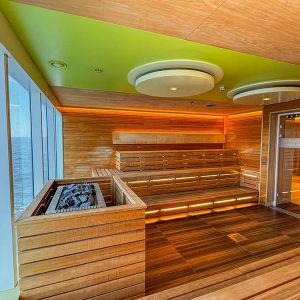Despite being relatively widely travelled, Japan was more culturally different than we’d anticipated and there’s a significant amount of etiquette involved. If you’re travelling to Japan, hopefully the following may help.
People constantly bow. Do not attempt to shake hands, bow back. The more senior the person, the lower you need to go.
Japan is a nation of mask wearers – the surgical masks protect them from germs in winter and pollen in summer. Taxi drivers even wear them in the cars.
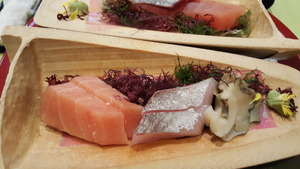 People are friendly and helpful and will approach you if you’re looking lost and go out of their way to give you directions (this can extend to taking you there and with no hassle).
People are friendly and helpful and will approach you if you’re looking lost and go out of their way to give you directions (this can extend to taking you there and with no hassle).
It is a male dominated society. Whilst men work longer hours and go drinking afterwards, women tend to stay at home.
The Japanese all want their photographs taken individually in front of iconic sites and sometimes with you, especially if your hair is blonde or red.
You will eat a lot of miso soup, tofu and raw fish (sushi and sashimi).
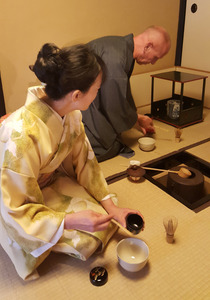 Tea ceremonies are a formal, elegant process and are not to be missed.
Tea ceremonies are a formal, elegant process and are not to be missed.
Tokyo, has a diverse range of quirky restaurants e.g. Maid Cafes. We tried the Robot Restaurant.
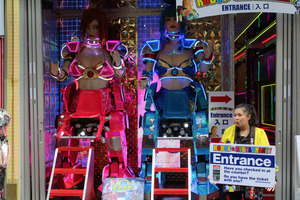 Smoking is still allowed in restaurants and bars.
Smoking is still allowed in restaurants and bars.
Credit cards are not as widely accepted as they are in the UK. When they are taken, processing can be basic and require a signature. At the opposite end of the scale, others are taken via a gizmo attached to an i-pad and require a ‘finger signature (it’s also said to record your e-mail address).
Tipping is not required at all – in fact it’s said to cause confusion and embarrassment.
The luggage forwarding system is excellent so you can just carry hand baggage. It can take either 12 or 24 hours to arrive and costs around £12 to £20 per bag depending on distance and time.
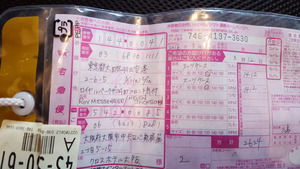 Taxis are often old fashioned, black and look as though they came from Russia. Yet all have automatic opening on the left hand side of the car – they do not like you using the right door. The drivers can wear dinner suits and white gloves.
Taxis are often old fashioned, black and look as though they came from Russia. Yet all have automatic opening on the left hand side of the car – they do not like you using the right door. The drivers can wear dinner suits and white gloves.
The Japanese drive on the left. Standing on escalators depends on which city you’re in as in some expect you to be stationary on the right, others on the left.
J walking is frowned up.
Cyclists often use pavements which usually have yellow raised and dotted line for visually impaired.
Children are either carried or walk: you hardly ever see a buggy.
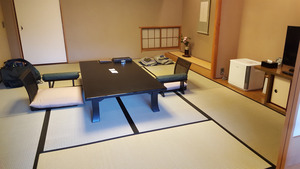 Ryokans are traditional Japanese houses where you can enjoy a traditional experience including a special dinner, sleeping on futons on tatami mats and enjoying the onsen. There is a lot of etiquette associated with staying in a ryokan which is explained on arrival.
Ryokans are traditional Japanese houses where you can enjoy a traditional experience including a special dinner, sleeping on futons on tatami mats and enjoying the onsen. There is a lot of etiquette associated with staying in a ryokan which is explained on arrival.
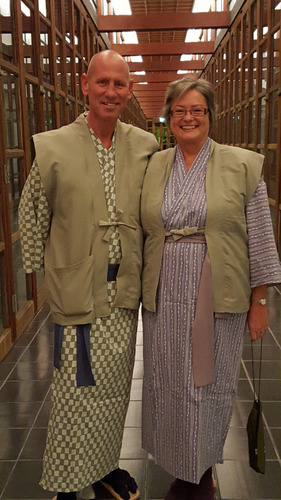 Onsen are traditional public baths (generally found in Ryokan) and are a way of life. Men and women are segregated as bathing is naked. There’s lot of etiquette surrounding the bathing process.
Onsen are traditional public baths (generally found in Ryokan) and are a way of life. Men and women are segregated as bathing is naked. There’s lot of etiquette surrounding the bathing process.
Toilets vary between squat and western style. They often have heated seats and a range of bottom washing and drying options which can be regulated in terms of water temperature and pressure. Some have sounds, either music or running water, to disguise the noise of your ablutions. In better hotels, seats and lids may open and close automatically. Ironically hand dryers are few and far between as the Japanese all appear to carry small flannels for drying their hands
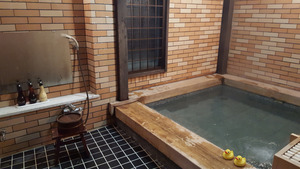 Baths are short but very deep.
Baths are short but very deep.
It’s hard to find a litter bin in public places as everyone’s encouraged to take rubbish home. Children are responsible for cleaning their school from an early age.
Vending machines are ubiquitous and on every street corner and railway station. They sell a huge range of both cold and hot drinks (which are shaken to heat).
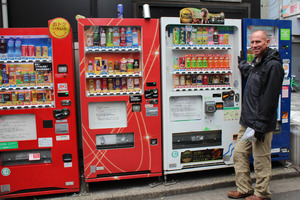 Gambling is illegal but Pachinko Parlours have a mixture of slot and pinball machines where you win balls which can be exchanged at any time into goods at the parlor’s gift shop. But you can also bypass the law that prohibits gambling by exchanging the balls first into some special goods and then exchanging the special goods for cash at a small window just outside the parlor. In Osaka we saw people queuing to get in at 10am.
Gambling is illegal but Pachinko Parlours have a mixture of slot and pinball machines where you win balls which can be exchanged at any time into goods at the parlor’s gift shop. But you can also bypass the law that prohibits gambling by exchanging the balls first into some special goods and then exchanging the special goods for cash at a small window just outside the parlor. In Osaka we saw people queuing to get in at 10am.
It’s acceptable to sniff and the Japanese find handkerchiefs abhorrent. If a tissue is used, the rule is one blow and throw.
Electric sockets vary enormously and we found our English three pin plug could be used in some places.
Helen has written many reviews about her travels around Japan for Silver Travel Advisor. Simply type ‘Japan’ into the search box at the top of this page to find them.

